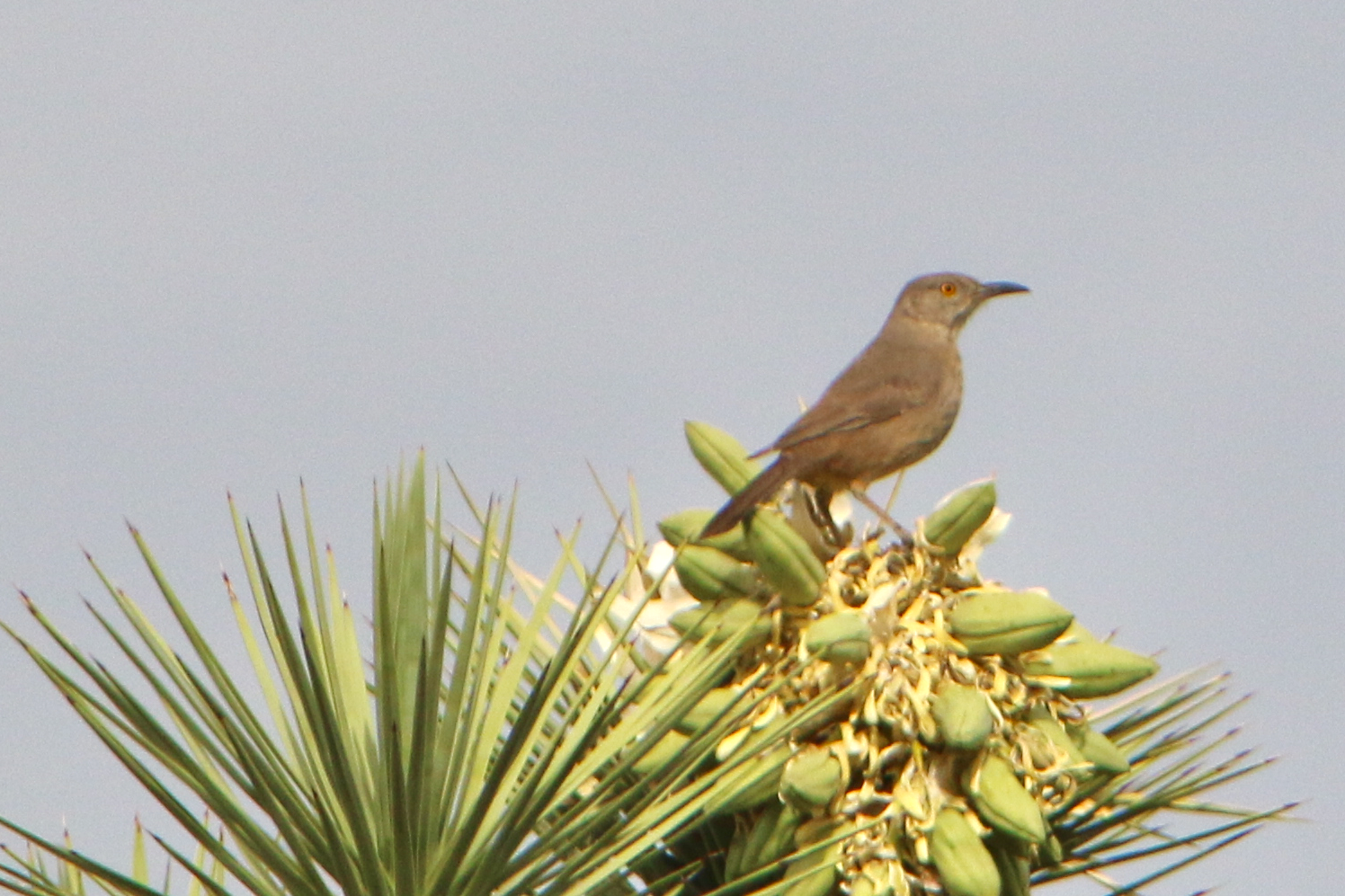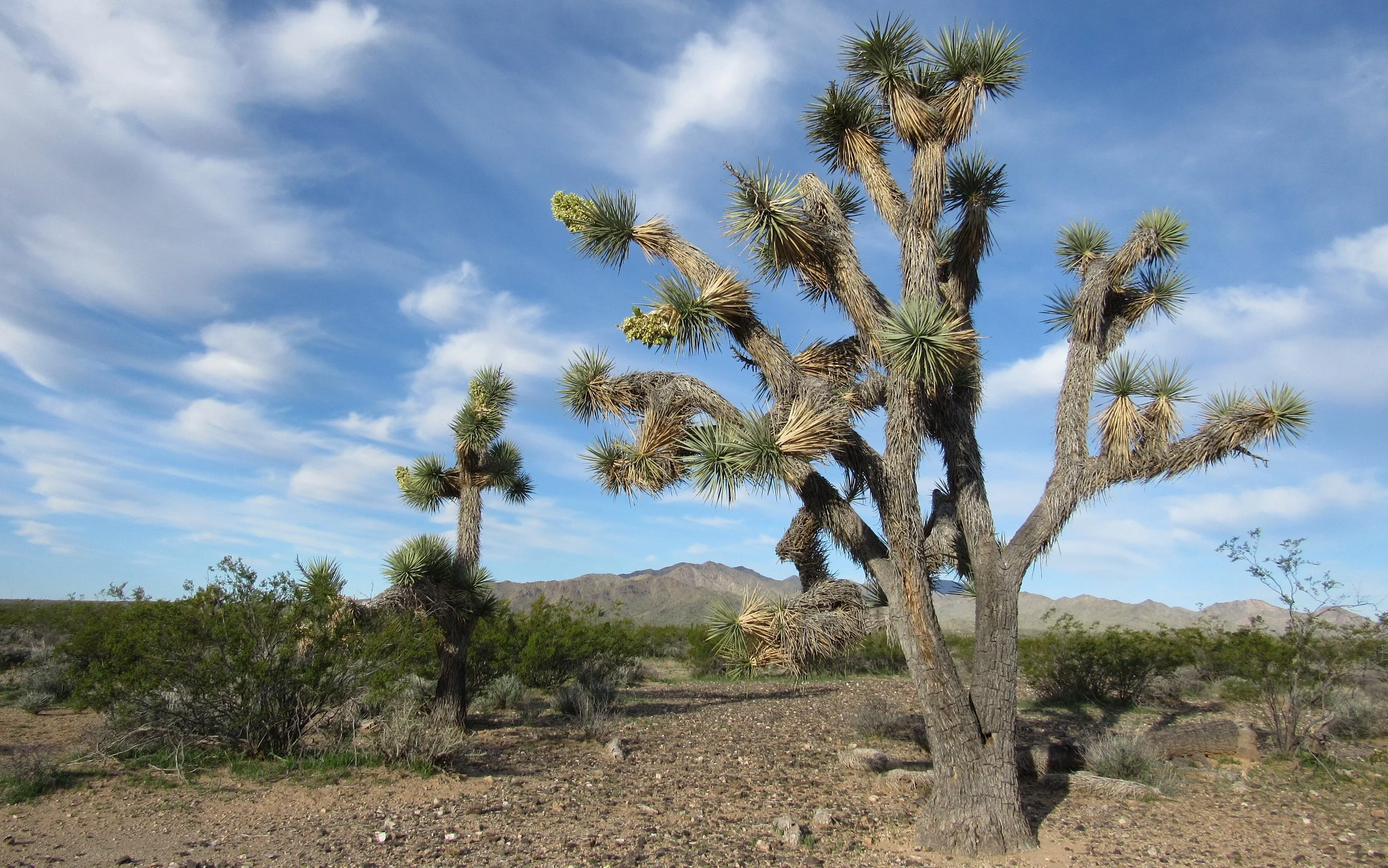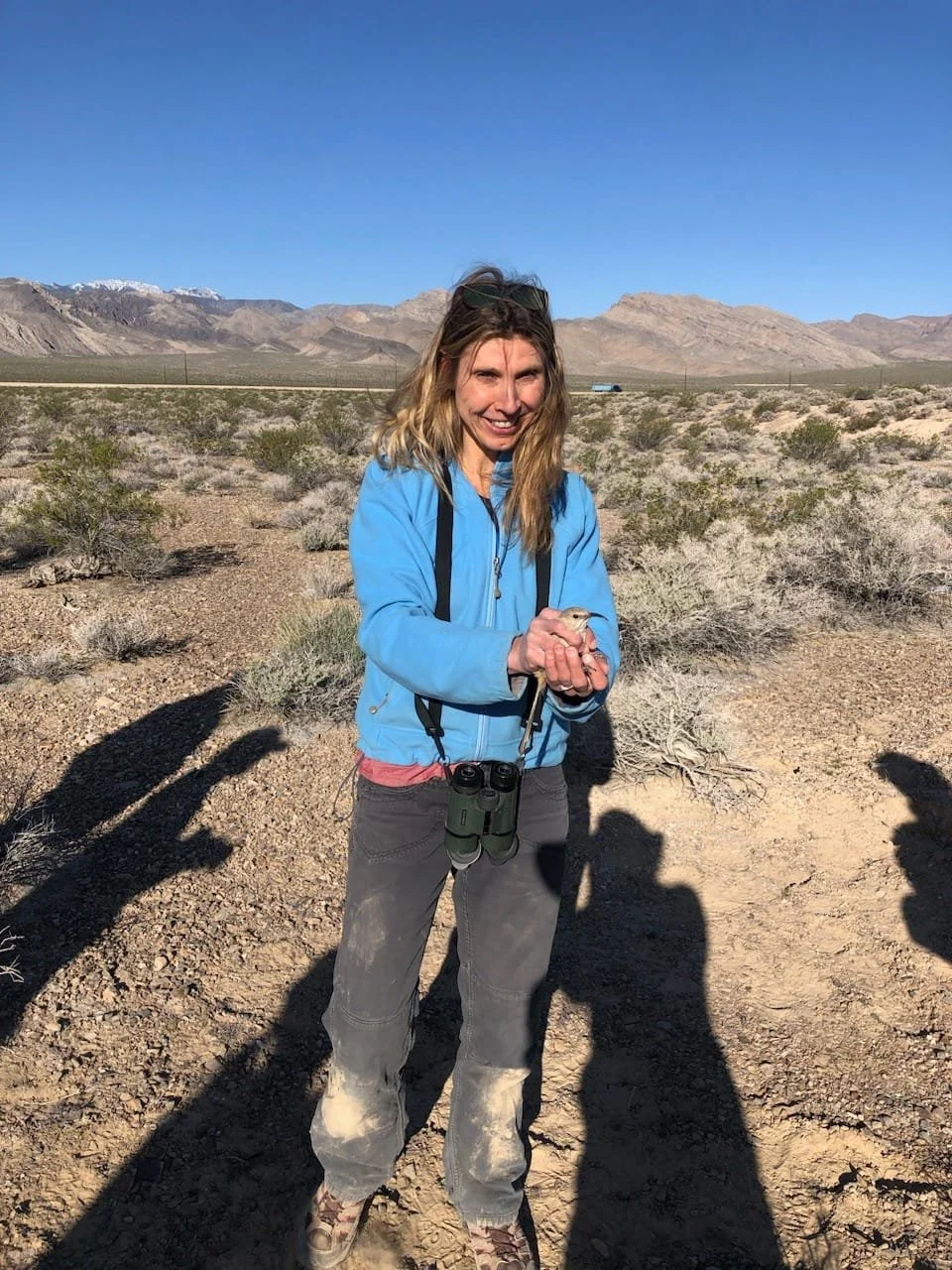Desert Thrasher Monitoring
Bendire’s and LeConte’s thrashers are among the fastest-declining species in the arid Southwest, and they are therefore widely recognized as species of continental concern as well as Species of Greatest Conservation Need (SGCN) by most of the southwestern U.S. states. Both species present challenges to research and monitoring in that (1) they are scarcely scattered across large swaths of landscape, (2) they nest earlier than most other landbirds, and (3) they use food resources that are often ephemeral, thus forcing them to occupy different nesting areas or even forego breeding from year to year. Therefore, little is known about how to adequately address the urgent conservation needs of these species.
Recognizing this major knowledge gap, agency partners, researchers, and non-profit organizations of the desert Southwest formed the Desert Thrasher Working Group (DTWG) in 2010 with the goal of addressing knowledge gaps to advance effective conservation actions. Since the DTWG was created, GBBO has been working with partnering organizations to design standardized inventory, monitoring, and centralized data management protocols that address basic needs for driving conservation of the species forward. Additionally, GBBO helped compile and vet all historic location data to create the first generation of spatial habitat suitability models for the two species. GBBO was also instrumental in implementing range wide surveys for these species (Arizona, California, Nevada, New Mexico, Utah, and Sonora Mexico) to generate an updated distribution map and conduct a vegetation analysis to describe the birds’ breeding habitats.
Dawn, with Nevada’s first banded and radio-tagged LeConte’s Thrasher
Current Research
In 2023, GBBO received funding to conduct surveys for thrashers in the newly designated Avi Kwa Ame National Monument in southern Nevada. This monument not only protects one of the most culturally significant landscapes in the entire Mojave Desert but it is biologically significant and appears to be a critically important stronghold for desert thrashers. Within Nevada, lands within the Monument accounted for 95% of Bendire’s Thrasher and 70% of LeConte’s Thrasher observations in the 2017-2018 range wide survey effort.
For this project, we are collecting geographically concentrated data inside the Monument boundary to quantify the density, distribution, habitat use, and fecundity of both thrasher species, using the survey methodology developed and tested by the DTWG. These data will provide an indication of the role that disturbances of various types play in thrasher occurrence and population growth.
As a state coordinator for the DTWG, GBBO continues to work hand in hand with our partners towards thrasher conservation. We are assisting USFWS in writing the Desert Thrasher Conservation Strategy. Due to the high degree of overlap between habitat and landscape requirements between sites suitable for utility-scale solar development and Bendire’s and LeConte’s Thrashers occupied habitat, we have been helping to develop guidelines to avoid and minimize impacts to Desert Thrashers during development of utility-scale solar projects. We will continue to work with partners to protect Desert Thrashers and their habitats, prioritizing the most urgent conservation needs and knowledge gaps of these enigmatic birds.









Did You Know?
A LeConte’s Thrasher does not need to drink water, instead receiving all of its water from food items it consumes.
Rangewide Surveys
GBBO has conducted area search surveys for these thrashers using standardized protocols developed by the DTWG across Nevada since 2017 (excluding 2019 & 2020). As of early 2024, we have surveyed over 650 plots in Nevada and recorded 315 LeConte’s territories and 36 Bendire’s Thrasher territories.
Since 2020, GBBO has partnered with organizations (Cedes and OVIS) in Sonora Mexico to survey for thrashers. These partners have surveyed in Sonora using the standardized survey protocol developed by DTWG, and also a Discovery Survey protocol specifically developed by GBBO and designed to increase data about these birds in Mexico, where there are very few records of these species.
Motus
GBBO helped band and radio tag a LeConte’s Thrasher for a study through the Motus network. After over a year of trying to catch these birds, and with the help of 10 biologists, one bird was finally captured. It was such a special moment to have all the biologists present that have worked so closely with this species for so many years. It is also the first state record for this species being banded and the only LeConte's tagged for the Motus network.
The capture team of Nevada’s first banded and radio-tagged LeConte’s Thrasher. From right to left: John Mark Simmons, Chrissy Kondrat-Smith, Dawn Fletcher, Corrie Borgman, and Lauren Harter, photo by Chris McCreedy



